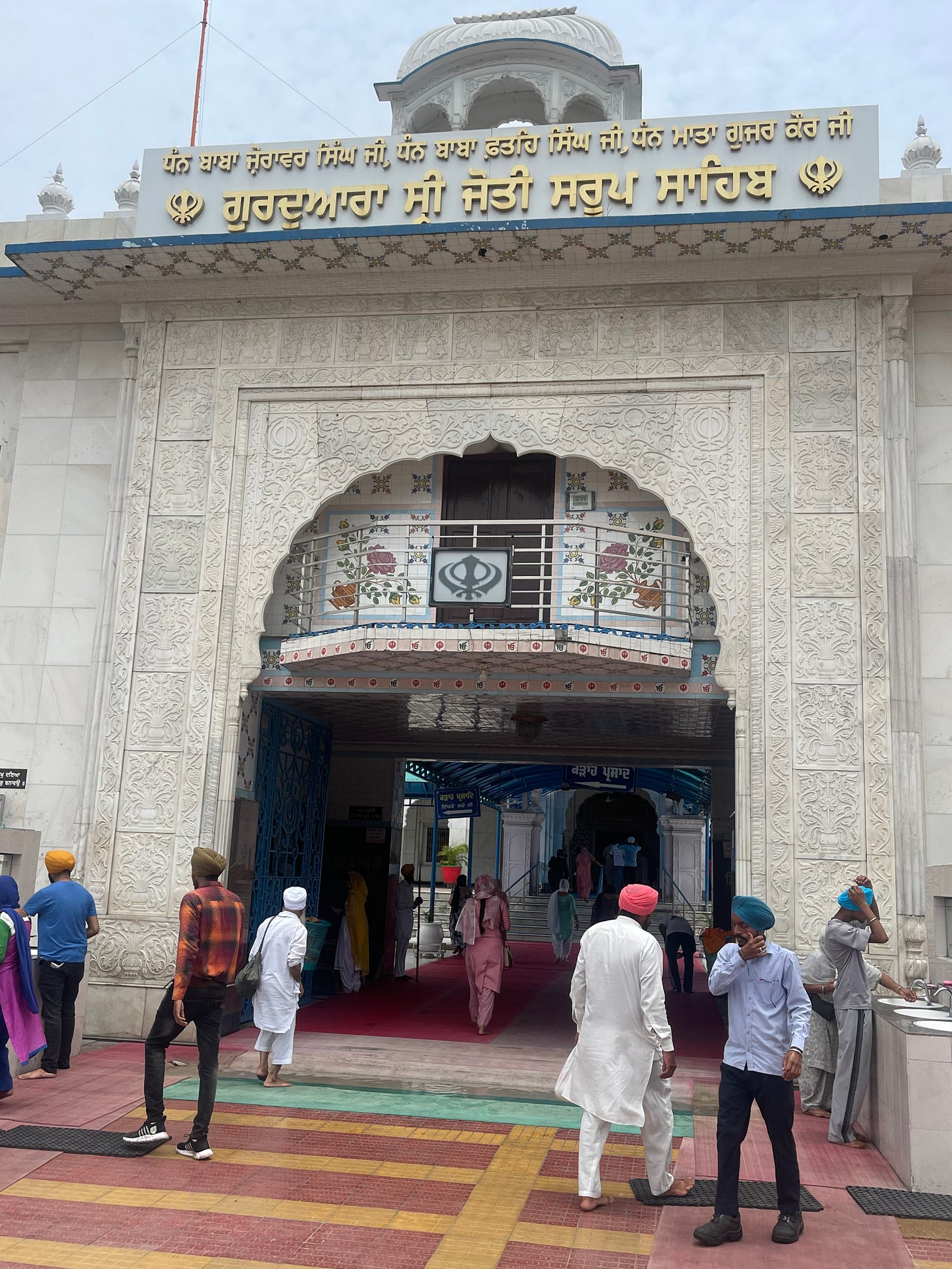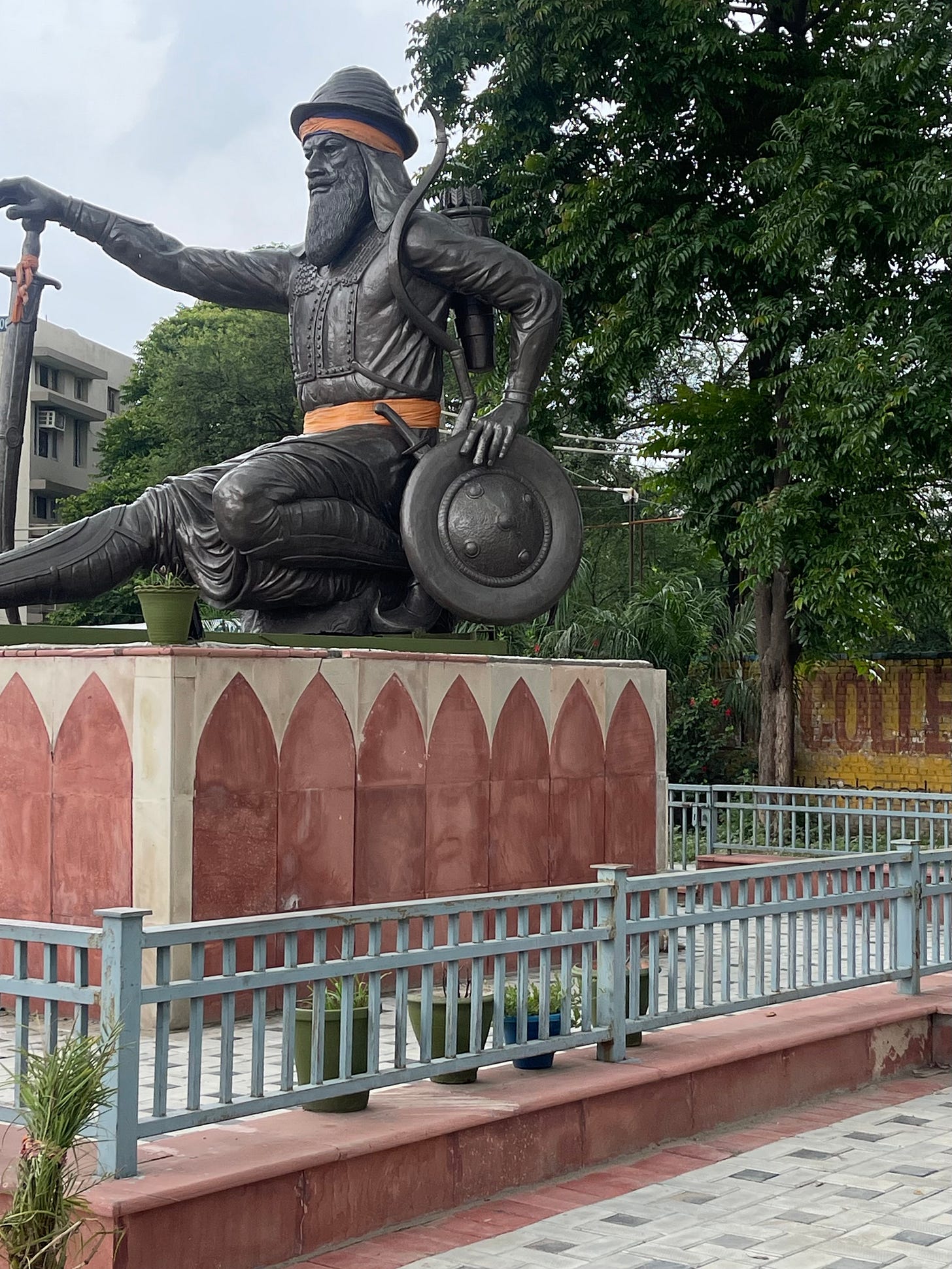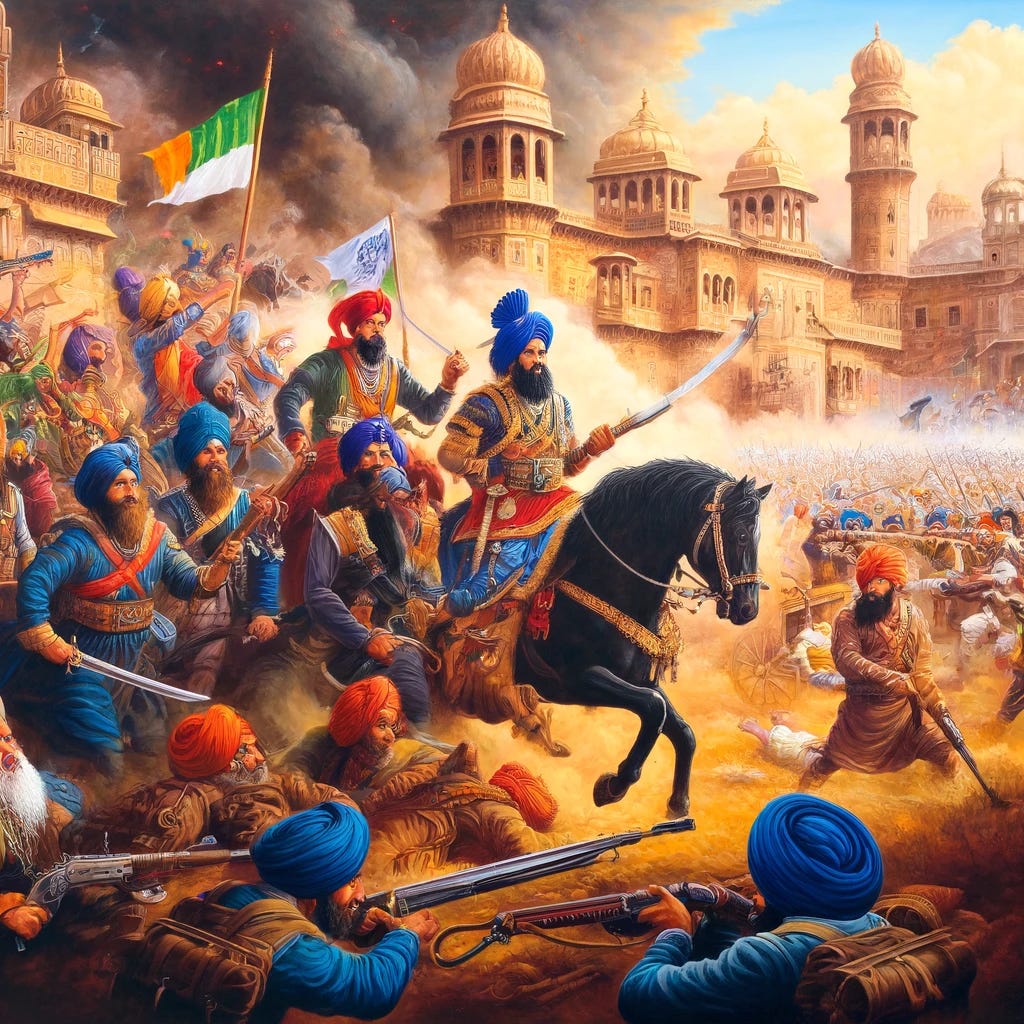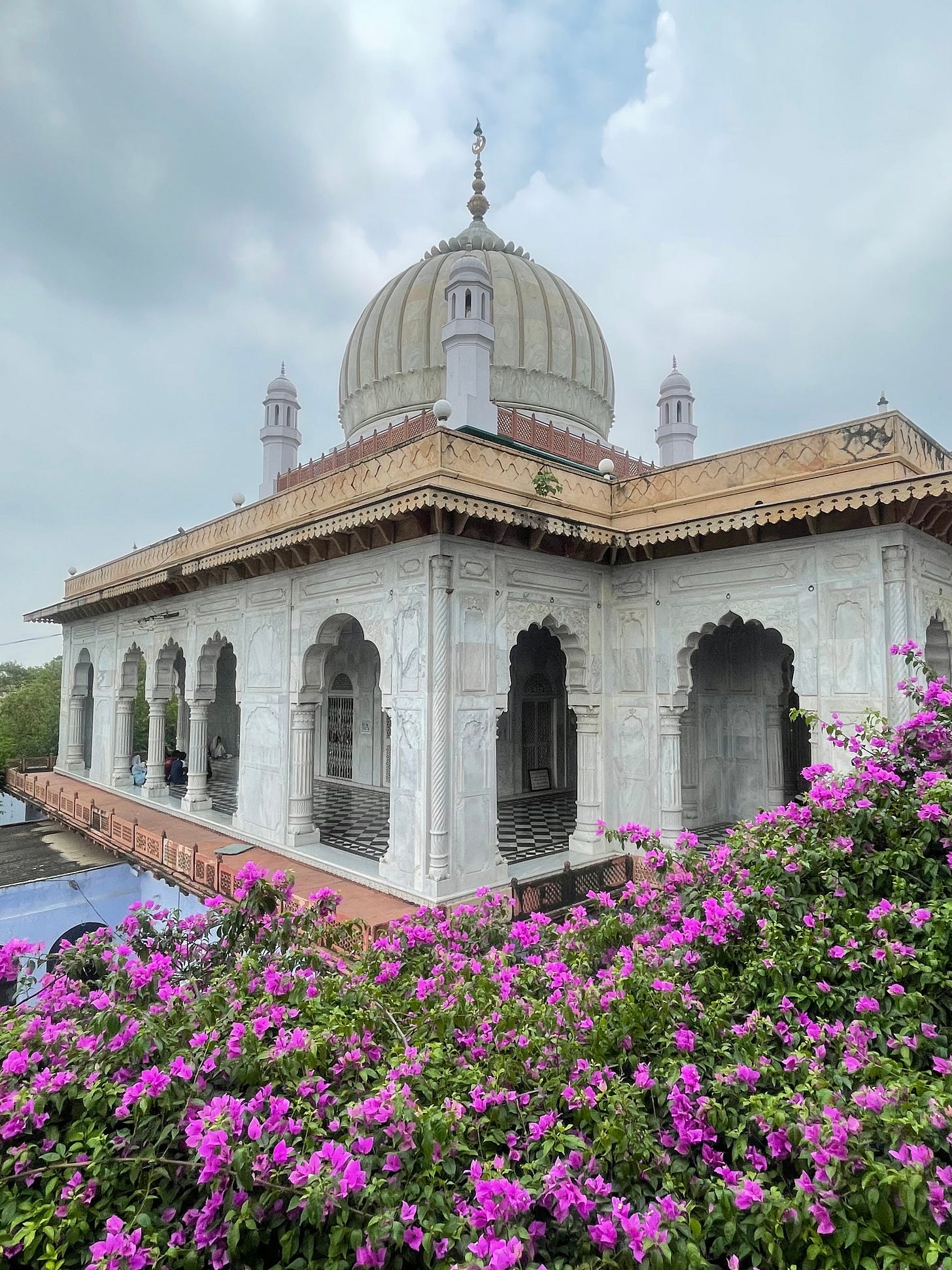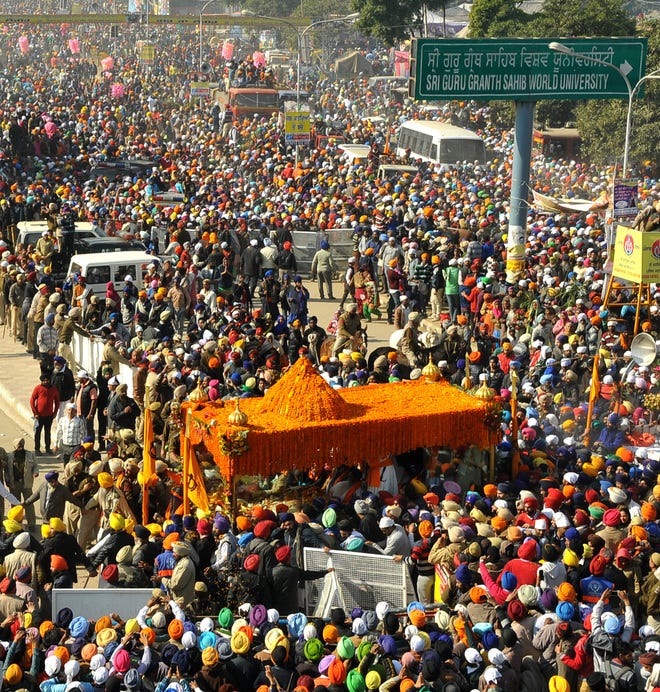Recapture of Sirhind by the Sikhs—Post-Banda Bahadur
Recapture of Sirhind by the Sikhs in the year 1764—post-Banda Bahadur era, is much less well-known than its first capture and sacking by Banda Singh Bahadur in the year 1710.
A Historical Prelude: The Martyrdom and Its Aftermath
The historic town of Sirhind, written as ਸਰਹਿੰਦ in Punjabi and सरहिंद in Hindi, derives its name from the Persian "Sar-i Hind," signifying its traditional role as the "Frontier of Hind," marking it as a pivotal gateway at the edge of northern India. A name etched in the collective memory of the Sikh community, represents a site of profound grief and ultimate retribution. The town gained its notorious significance back in 1705 when it became the setting for the tragic martyrdom of the younger Sahibzadas—Zorawar Singh and Fateh Singh, barely 9 and 6 years old. The sons of Guru Gobind Singh were mercilessly bricked alive under the orders of Wazir Khan, the then Governor of Sirhind, for refusing to renounce their faith. This act of cruelty galvanized the Sikhs, setting the stage for a relentless struggle against Mughal oppression.
Banda Singh Bahadur: A Catalyst in Sikh Resurgence
Emerging as a pivotal figure during this period of Sikh resistance was Banda Singh Bahadur. Initiated into the Khalsa by Guru Gobind Singh himself, Banda Singh carried the Guru's mission and military mandate forward with formidable zeal. In 1710, this indomitable leader avenged the Sahibzadas by sacking Sirhind, executing Wazir Khan, and signaling the beginning of the decline of Mughal control over the region. However, his revolutionary campaign was short-lived. Captured in 1716, Banda Singh was brutally executed in Delhi, a grim spectacle of Mughal cruelty.
From Persecution to Power: The Rise of the Sikh Misls
Following Banda Singh's death, the Sikh community faced intense persecution. The Mughals, alarmed by the rising influence of Sikhs, resorted to severe measures to crush the burgeoning power. However, the Sikhs, resilient and determined, began organizing themselves into various Misls (military confederacies) during this tumultuous period. By the mid-18th century, these Misls had grown both in strength and ambition, fuelled by a desire to reclaim their lands and assert their sovereignty, as the ultimate tribute to the eternal mission of Guru Gobind Singh against oppression and brutality.
The Strategic 1764 Recapture of Sirhind by Sikh Misls
In 1764, a significant year in Sikh history, the Sikh Misls, having grown formidable and well-coordinated, orchestrated the recapture of Sirhind from the weakening grip of the Mughal Empire. This effort was led by the chiefs of the Phulkian Misl, notably Ala Singh of Patiala, who were joined by other prominent Misl leaders such as Jassa Singh Ahluwalia and Jassa Singh Ramgarhia. Their collaborative efforts were a response to the declining Mughal authority, further weakened by repeated Afghan invasions led by Ahmad Shah Durrani (Abdali). As the Sikh forces advanced, they confronted the Mughal Governor Zain Khan, whose defeat and death in battle marked a decisive turning point in the region, and in many ways, a symbolic repeat of the death of Wazir Khan at the hands of Banda Bahadur in the famous Battle of Chappar Chiri in the year 1710.
The Impact and Significance of Victory
The victory at Sirhind was much more than a military conquest; it was a symbolic act of justice avenging the tragic deaths of the younger Sahibzadas. Baba Ala Singh of Patiala, in particular, played a crucial role in this campaign, employing his keen military insight to dismantle the remnants of Mughal control in Sirhind swiftly. This victory not only avenged past grievances but also firmly established Sikh control over this critical Punjab territory, symbolizing the reclamation of Sikh pride and the consolidation of their power in the region.
Sirhind Under Sikh and British Rule
The Flourishing of Sirhind under Sikh Sovereignty
Following its liberation from Mughal control, Sirhind was seamlessly integrated into the burgeoning estate of Patiala, heralding a new era of prosperity and stability under the leadership of Baba Ala Singh, now with the title of Maharaja of Patiala. This pivotal shift marked the end of its history as a Mughal stronghold, ushering in a period of significant development and peace. Under Sikh governance, particularly during the reign of Baba Ala Singh and subsequent rulers, Sirhind flourished. The region benefited from policies that promoted economic growth and social welfare, undoubtedly facilitated by its strategic location on the Grand Trunk Road. This historic route, built originally by Sher Shah Suri, connecting Delhi with Lahore, enhanced Sirhind's economic significance. The governance model established in Sirhind became a blueprint for effective regional administration within the expanding Sikh territories, which continued to thrive until the British annexation of Punjab in 1849.
Transition and Governance during British Paramountcy
Post-1849, after the Second Anglo-Sikh War, Sirhind, along with the rest of Punjab, underwent substantial administrative reorganization under British rule. However, unlike many regions— notably the cis-Sutlej area of Punjab that was part of Maharaja Ranjit Singh’s Empire and directly administered by the British, Sirhind fell under the jurisdiction of the Patiala Princely State, which maintained a semi-sovereign status. Patiala, under the enlightened rule of its Maharajas, managed its internal affairs autonomously, handling judiciary, police, education, and other local issues, while the British held control over defense, foreign affairs, and broader communications. This form of indirect rule allowed Sirhind to retain much of its traditional governance structures, preserving a degree of the sovereignty that had been established during the era of Sikh rule.
This unique administrative arrangement ensured that Sirhind continued to operate under the dual oversight of the Patiala princely leadership and the overarching British authority, blending traditional practices with the necessities of colonial administration. This period helped in sustaining the cultural and administrative legacy of the region, even as it navigated the complexities of colonial oversight and local governance.
Sirhind Until Independence and Beyond
The significance of Sirhind in the history of Punjab continued to be recognized up to and beyond Indian independence in 1947. Following the integration of the Princely States of Punjab, including Patiala, into the Union of India post-independence, Sirhind became a district of the newly formed State of PEPSU (Patiala and East Punjab States Union), until its merger with Punjab in 1956. At that point, it became a tehsil (sub-division) of Patiala district. Sirhind is now part of the modern-day district of Fatehgarh Sahib, created in 1992 in Punjab, serving as a historical testament to Sikh resilience and their unwavering spirit of independence and Hindu-Sikh unity.
Summing Up: A Tribute to Unyielding Courage
The recapture of Sirhind by the Sikhs in 1764, much less known than its conquest by Banda Singh Bahadur in 1710, is more than a historical footnote; it is a poignant reminder of the unyielding courage and sacrifice inherent in the Sikh ethos. From the cold walls that claimed the lives of young Sahibzadas to the battlefields that witnessed the resurgence of Sikh sovereignty, Sirhind stands as a perpetual tribute to the indomitable spirit of those who dared to defy oppression. For the local community— comprising Sikhs, Hindus and to a lesser extent, Muslims—, it embodies the enduring lessons of justice, bravery, and the ultimate triumph of righteousness over tyranny—a narrative that continues to inspire generations. Today, it’s a thriving GT Road town with a flourishing mandi and small-scale industries, with a populace that is deservedly proud of its rich history and heritage.




